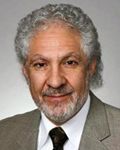Article
Viewpoint: EHR mandates should be coupled with tort reform
Author(s):
There is a middle road wherein standards and expectations of how to practice in a whole new world of real-time data can be established, and it must be addressed so that those who use EHR systems can do their jobs without apprehension and fear.

The buzzards are already beginning to circle.
Physicians and nurses are the most pressured of all professionals, with expectations of their performance and its unimaginable responsibilities beyond the comprehension of people who have never made life-and-death decisions countless times a day. With every decision and action comes the risk of being held liable and losing not only their professions, but their personal assets. The very mechanics of using electronic health records (EHR) in their current state has complicated the lives of many clinicians who use them. Physicians have been slow to adopt EHRs for that reason. With luck, that will change.
An EHR system can track how long a doctor looked at a document, if he or she scrolled down to read the entire thing, how long it took to respond to an alert or notification of an abnormal result, how long it took to answer e-mail, and the accuracy of every assessment and action. It can track whether their decisions meet the most recent guidelines or research results in a world where thousands of new papers and research results are published every week.
This may sound wonderful for those receiving care, but how many of you would want to use such a system in your work knowing that your every thought and action could be audited and evaluated by others who make their living suing you?
The President's plan calls for rewarding physicians who purchase and install EHR systems through a series of financial incentives over a period of years. Mr. President: Thanks for the thought and the money, but if you really want to see this work, call off the dogs before the kennel doors open. Instead of pouring more money into another system in an effort to eliminate its problems, get to the heart of the matter. Reduce liability premiums for physicians and hospitals that install and use EHRs. Protect physicians who will have their every move, thought, and action auditable at the most granular level. (Personally, I might like to know that I can finish dinner or brush my teeth before responding to a real-time alert that someone's blood sugar was a little high without someone suing me because I took too long to act.) Establish standards of expectation for clinicians who will be working in a world of real-time data that is delivered as quickly as it is generated. Place limits on what audited user-activity information can be deposed in malpractice litigation, while still providing the opportunity for those who have been victims of genuine malpractice to seek justifiable compensation.
There is a middle road wherein standards and expectations of how to practice in a whole new world of real-time data can be established, and it must be addressed so that those who use EHR systems can do their jobs without apprehension and fear.
We have the technology to do wonderful things in healthcare and reform the system entirely through exciting and innovative technology. Most doctors recognize the wonderful benefits that an EHR system can bring to the quality of care they deliver. But what we also need is for our physicians and nurses to be able to use these tools without fear of the foxes lurking around the henhouse. Otherwise, we will end up with a very expensive and technologically advanced universal system with no doctors who want to use it, and a lot of very rich lawyers.
Samuel R. Bierstock, MD, is the founder of Champions in Healthcare, a clinical IT consulting company. Send your feedback to meletters@advanstar.com
.

The opinions expressed in The Way I See It do not represent the views of Medical Economics. Do you have an experience you'd like to share with our readers? Submit your writing for consideration to manuscripts@advanstar.com
.





